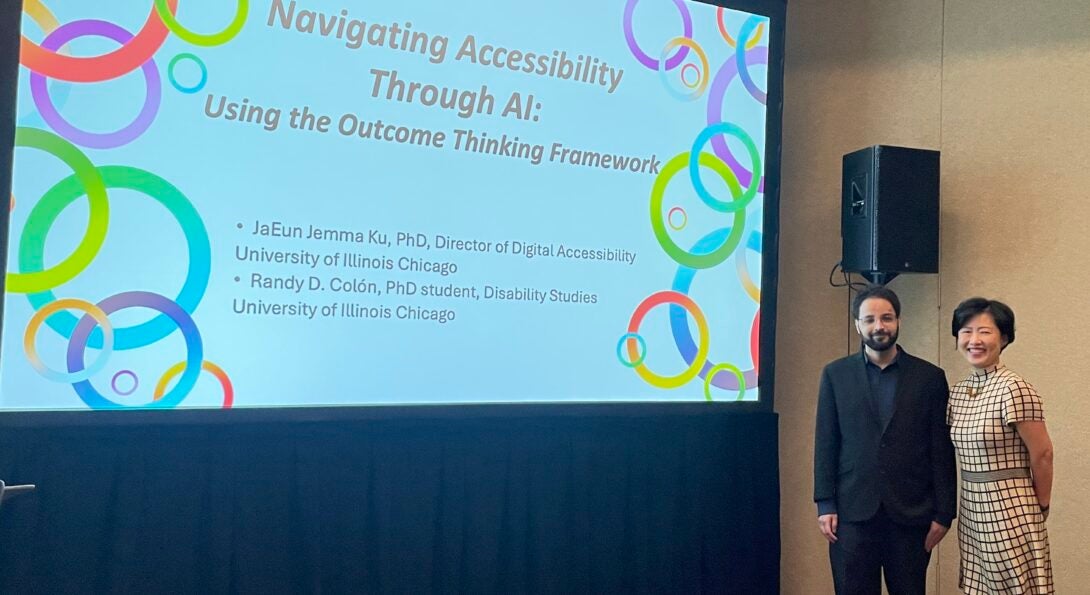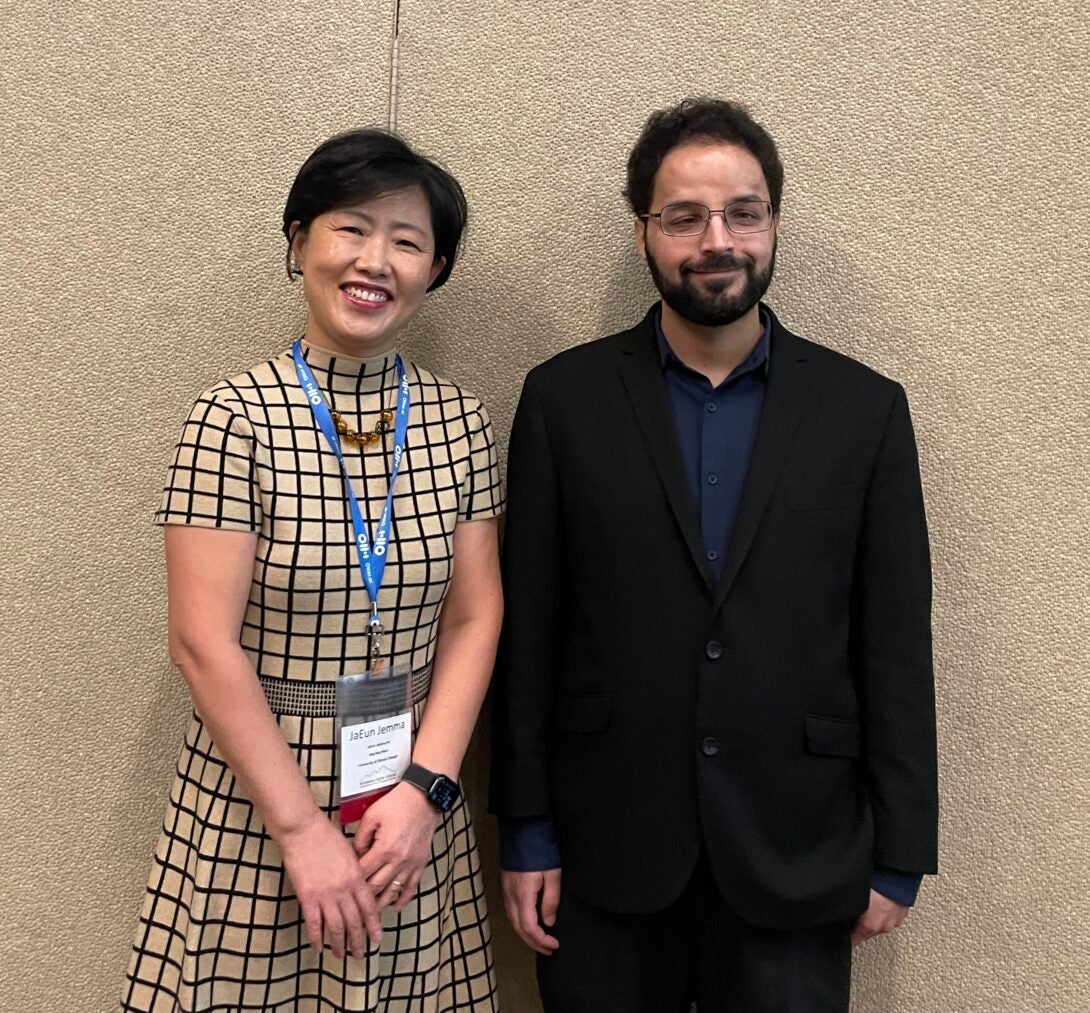UIC Presents “Navigating Accessibility Through AI using the Outcome Thinking Framework” at 2024 EDUCAUSE Conference

Introduction
At the recent “Navigating Accessibility Through AI Using the Outcome Thinking Framework” panel, UIC Director of Accessibility Jemma Ku, and Ph.D. Student and Accessibility Consultant Randy Colón, convened to discuss navigating how Artificial Intelligence is transforming accessibility in higher education.
Held on October 24th at the annual EDUCAUSE conference, this engaging session provided attendees with both the inspiration and the tools to rethink how AI can support students, faculty, andstaff with disabilities. Panelists guided participants through the Outcome Thinking Framework, a user-centered approach emphasizing the need to prioritize human judgment in AI solutions.
Attendees explored real-world scenarios in a hands-on exercise, learned strategies for evaluating AI’s potential, and discovered ways to balance innovation with ethical responsibility.
By the end of the session, participants were equipped not only with actionable strategies but also with a renewed commitment to advancing inclusive, impactful AI-driven accessibility solutions within their institutions.
title
UIC Technology Solutions interviews Jemma and Randy on Navigating Accessibility Through AI:
Could you explain the Outcome Thinking Framework and how it differs from other frameworks commonly used in accessibility initiatives?
Jemma: The outcome-thinking framework aims to shed light on areas that AI tech companies have often overlooked. Its core principles include: (1) a user-centered approach, (2) evidence-based decision-making, (3) iterative and collaborative ongoing improvement, and (4) a focus on systemic impact to create lasting change.
This framework seeks to shift the AI discourse away from hype and fear by bridging the gap with a balanced approach that considers ethics, cost, governance, and the full context of AI use. Ultimately, we hope to unlock the true potential of AI.
How do you see AI enhancing accessibility in higher education, especially in terms of meeting diverse needs of students with disabilities? Could you share specific examples of successful AI implementations?
Randy: Several people talked about this at the conference, but our presentation was more about how to assess and implement the tools out there rather than sharing success stories. Jemma please correct me if I’m wrong.
Jemma: You are right, Randy. Rather than presenting the optimistic technologist’s view of AI’s promise, our presentation aims to provide a critical perspective on how to choose and implement AI technologies to meet the needs of students with disabilities.
title

What are some of the ethical considerations that come into play when using AI for accessibility, and how can educators and administrators address these in a university setting?
Jemma: Ethical considerations surrounding AI use are an increasingly important topic in higher education, extending beyond the confines of academia. This discussion addresses critical issues such as bias and fairness, privacy, autonomy and control, as well as the risks of dependency and deskilling, particularly for individuals with disabilities. This underscores the value of our outcome-thinking framework, which allows us to assess the multifaceted impacts of AI comprehensively.
For institutions looking to adopt AI-driven accessibility tools, what initial steps would you recommend, and how can they best evaluate the impact of these tools using the Outcome Thinking Framework?
Jemma: Here are the steps we are proposing. We recommend starting with defining outcomes, and evaluating AI.
Outcome Thinking Framework Steps

Step 1: Define Outcomes
- Set clear, measurable goals that focus on user-centered outcomes
- Engage diverse stakeholders to understand their accessibility needs and priorities
- Conduct assessments to identify key areas for improvement
Step 2: Evaluate AI
- Assess capabilities of AI technology to improve accessibility
- Analyze potential risks and biases to ensure responsible use
- Evaluate institution’s capacity to adopt and support AI tools effectively
- Ensure AI tools align with user-centered outcomes
Step 3: Implement, Collaborate & Optimize
- Develope and inclusive implementation plan that ensures adoption and practical use across the institution
- Test solutions with diverse users, including faculty, staff, and students
- Continuously refine based on feedback from all users and stakeholders
Step 4: Drive Equitable Institutional Change
- Embed accessibility into policies and practices
- Align efforts with broader goals for accessibility, diversity, and inclusion
- Share successes and lessons learned to promote a cultural shift toward accessibility